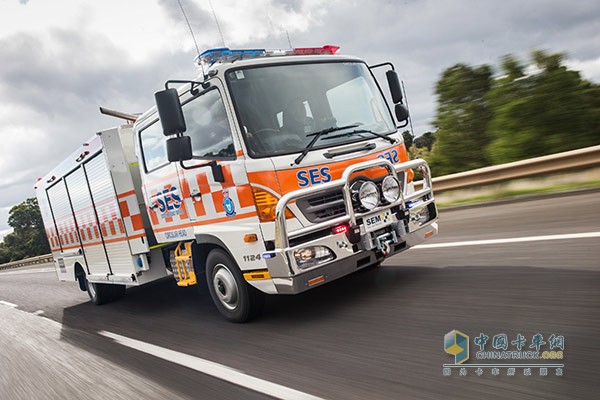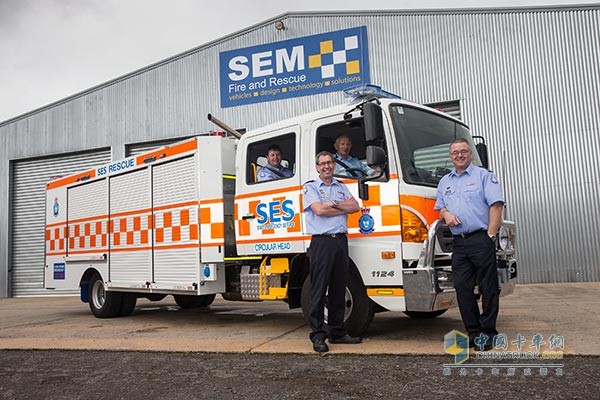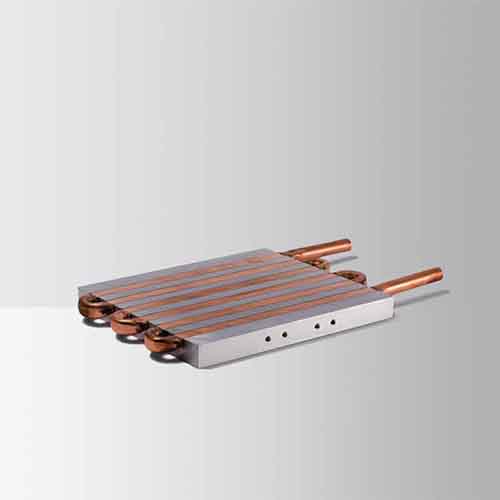The Tasmanian Emergency Services Department (SES) is mainly composed of volunteer drivers and team members. Therefore, it is under pressure to perform evacuation tasks. This has also become one of the main factors in the use of Allison automatic transmissions. . The Northwestern Division of Tasmanian Emergency Services selected the Allison fully automatic transmission and deployed its new Hino emergency rescue truck to help its volunteers and rescue teams perform their rescue missions more safely. The Hino 500 Series FD 1124 is a double-decker cab-equipped model equipped with an Allison 2500 five-speed automatic transmission. It is ready for emergency services and roadside assistance in a remote, outlying neighborhood on this isolated island. Anthony Dick, chief commander of the Northwest Division of Tasmania's emergency services, said that the rescue team relied mainly on volunteers, which meant that most of the team members were not full-time professional truck drivers, and their technical level was average. Therefore, the Allison automatic transmission is a safer option for drivers and rescuers who need to respond quickly in an emergency. "Automatic transmissions can reduce the driver's fatigue and concentrate on handling the vehicle, compared to manual transmissions," Dick added: "When the emergency rescue team has to deal with tasks as quickly as possible, and often requires long-distance driving. Automatic vehicles are more secure." According to Dick, this is why the fire department and emergency department use the Allison transmission rescue vehicle extensively, so the decision to install an automatic transmission for a newly purchased truck is very clear. He said: "The emergency rescue vehicle is on standby for most of the time due to the nature of its work. When an urgent mission is received, the volunteer team needs to immediately work and quickly reach the site of the disaster to ensure that the rescue team completes the mission safely and smoothly. is crucial." The other determinants of the fleet's purchase of Hino vehicles equipped with Allison transmissions is also its ability to reduce maintenance requirements and costs, and effectively protect the powertrain. “For a long time, manual transmissions have been prone to problems with clutches and gearbox wear. Coupled with the operation of non-professional drivers, vehicles are more prone to damage. Automatic transmissions can help prevent wear and tear on the drivetrain and reduce the vehicle's total cost of ownership. ". Dick said, "I fully understand why the Australian National Emergency Service Council and the Australian Fire Services Commission both recommend the Allison automatic transmission as a standard for fire and rescue vehicles." Each team member from the Tasmanian Emergency Services Division's Northwest Division Rescue Team used Hino vehicles to demonstrate the ease of handling of automatic transmissions. Dick said: "Everyone likes to drive that automatic car. Although there is no professional driving experience, but everyone's first impression is that driving an automatic rescue vehicle is as simple as driving a ride." The state government cooperated with local agencies to purchase the rescue vehicle and received funding from the local community for funding. The vehicle was stationed at Circular Head in the northwestern part of Tasmania. The rescue vehicle is equipped with a customized, modular shaped top to protect the emergency rescue facilities and ensure it is accessible. In addition, an 8kVA generator driven by the engine is installed. There are 10 sockets around the vehicle to provide 240V power. Dick said: "Based on the Hino 500 series FD models, we have purchased larger rescue vehicles equipped with more emergency rescue equipment to help us overcome the shortage of reserve resources when working in isolated areas." The Hino FD1124 rescue vehicle from Tasmania Emergency Services has a maximum total mass of 11,000 kg. The 6.4-liter Hino turbocharged, intercooled direct injection engine delivers 240 hp (176 kW) of power at 2400 rpm. The torque at 1500 rpm is 716 N•m.
Electronic equipment refers to equipment consisting of electronic components such as integrated circuits, transistors, and electronic tubes, and uses electronic technology (including) software to function, including electronic computers and robots controlled by electronic computers, numerical control or program control systems, etc., which can be used in almost any In the commercial, household, and industrial fields, the existence of electronic devices has been observed. The increase in the number of transistors of electronic devices has brought about an inevitable high temperature environment. For a reasonable temperature, the extended life of electronic devices can be ensured, and the aging of electrical components can be avoided. Therefore, the heat exchanger of electronic equipment is also the key to solve this problem. At present, the cold plate heat exchanger designed and produced by us is maturely applied in different electronic equipment.
Electronic Heat Exchanger,Electric Heater,Mini Oil Cooler,Compressor After Cooler Xinxiang Zhenhua Radiator Co., Ltd. , https://www.thermictransfer.nl Hino vehicle equipped with Allison transmission
Hino vehicle equipped with Allison transmission  Hino vehicle
Hino vehicle
